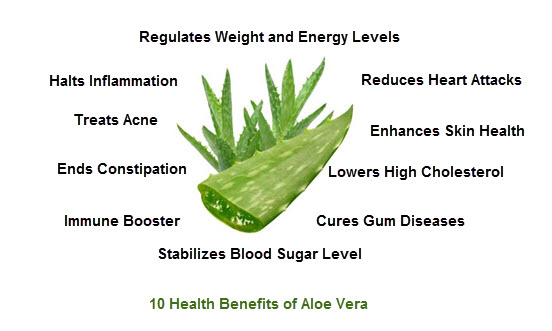We are no strangers to stress in
today’s frenetic society – traffic jams, train delays, meetings, deadlines,
unemployment, difficult relationships, demanding children, ageing parents,
financial worries. Does it ever stop? Throw in a poor diet, sleep deprivation
and insufficient downtime, and it’s only a matter of ‘when’ before you develop
adrenal fatigue in some form.
What is adrenal
fatigue?
Adrenal fatigue syndrome is a
group of signs and symptoms that typically results from intense or prolonged
stress, but it can also develop in response to acute or chronic illness. As the
name suggests, the main symptom is fatigue, which is not relieved by sleep.
There are, however, other associated complaints:
• Allergies
• Apathy
• Anxiety
• Chronic Fatigue Syndrome (CFS)
• Depression
• Frequent colds & flu
• Headaches
• Infertility
• Inflammatory Bowel Disease
(IBS)
• Inflammatory conditions
• Insomnia
• Irritability
• Low energy
• Low libido
• Menstrual difficulties
• Migraines
• Premenstrual Syndrome (PMS)
• Recurrent infections
• Skin complaints
• Sleep disorders
• Weakened immune system
• Weight problems
FACTS
The thing about adrenal fatigue
is that its onset is insidious. You can function – initially at least, with no
obvious sign of physical illness, yet it is always with an underlying general
malaise. You just don’t feel right. Compromised adrenal function can often
force you to rely on coffee, cola, chocolate and other stimulants to get going
in the morning and keep you going throughout the day. These ‘props’, however,
may help you to cope in the short-term, but the adrenal glands can be so
over-stimulated that eventually they pack up – think of a pump running dry in a
busy petrol station. This is known as ‘adrenal exhaustion’ whereby getting out
of bed for more than a few hours can prove difficult.
Stress and your body: The science
bit
The adrenal glands sit just above
your kidneys and are responsible for all your responses to stress, whether
physical, emotional or psychological. They produce adrenalin, cortisol and
dehydroepiandrosterone (DHEA) – collectively known as ‘stress hormones’.
Cortisol is the main stress
hormone and production fluctuates over the course of a day in tandem with your
natural circadian rhythm. Levels are usually at their lowest between midnight
and 4 am, and they then gradually increase until around 8 am in time for you to
wake up and start the day. After 8 am, cortisol levels start to decline
incrementally throughout the day to help prepare you for sleep.
Cortisol can be both friend and
foe. In ‘friend’ mode, it mobilises fat and carbohydrate for instant energy, it
maintains steady blood-sugar levels while we sleep, and it helps us to wake up
in the morning. In a nutshell, cortisol is the body’s Mr Motivator – it keeps
you wide awake and on your toes, and it empowers you to be ultra-productive.
Still, you can have too much of a
good thing, and when this friendly hormone is overproduced, it turns rogue and
robs you of sleep, leaving you feeling tired but wired. Excess cortisol can
also adversely affect:
• Ageing
• Bone and muscle tissue
• Cardiovascular function
• Glucose regulation
• Immune defence (reduced SIgA)
• Sleep
• Thyroid function
• Weight control
Cortisol output by your adrenal
glands is one of the most reliable indicators of your adrenal function, and how
well your body is coping with stress. DHEA, however, is another important
stress hormone and responsible for a number of functions within the body,
including immunity, energy production and protection from age-related
degenerative conditions. Imbalanced DHEA has been associated with:
• Alzheimer’s disease
• Cancer
• Cardiovascular disease
• Depression
• Impaired immunity
• Insulin resistance
• Obesity
• Panic disorder
Do I need to get my
stress hormones tested?
The NutriLife Adrenal Stress
Questionnaire has been devised by Janine Fahri to be used as a preliminary
guide to whether you have any stress hormone imbalances.
Grab a pen and tick all those
statements that apply to you…
I often feel tired for no apparent
reason
I have endured a lot of stress
over an extended period of time
I frequently feel drained, run
down and/or overwhelmed
I don’t wake refreshed even when
I go to bed reasonably early
I suffer from insomnia or with
sleep difficulties
I often wake up in the middle of
the night and can’t get back to sleep
I need a coffee to ‘kick-start’
me in the morning
I regularly skip meals e.g.
breakfast
I often crave sugary and/or salty
foods
I usually feel my best after 6pm
in the evening
I suffer from allergies e.g.
food, pollen and/or chemicals
I carry excess weight, especially
around my stomach
I frequently suffer from colds
and flu
I can take a long time to recover
from colds and flu
I have been trying to conceive a
baby with no success
I often feel emotional, tearful
or irritable
I am finding it increasingly more
difficult to cope with stress
I have suffered with long-term
illness
I am frequently low in mood,
apathetic and/or fed up
If you ticked 3 or more
statements, then it is highly recommended that you have your stress hormones
tested.
How are stress hormone
levels tested?
Your levels of the stress
hormones – cortisol and DHEA – can be determined via a simple saliva test
carried out in the comfort of your own home. See ‘What does the test actually
involve?’ for full details. The ‘comprehensive’ version of this test also
measures Secretory IgA, an antibody that plays a critical role in your body’s
immune system.
Can I ask my doctor for
this test?
Your doctor/GP can order a
standard blood test for adrenal function, but unfortunately this doesn’t
highlight anything more than the most severe cases of adrenal dysfunction, such
as Addison’s disease or Cushing’s syndrome.
Conversely, the salivary adrenal
stress test is a specialist laboratory test that provides a more representative
assessment of your cortisol levels throughout the course of a day. Furthermore,
there is substantial scientific evidence indicating that stress hormones are
measured more accurately in saliva than by taking a blood sample, which is
especially good news for those scared of needles.
What does the test
actually involve?
Full instructions will be
included with your test kit, but here’s a step-by-step guide to what taking the
test involves. Firstly, upon receipt of your test kit, store the enclosed gel
pack in your freezer until you are ready to return your samples to the
laboratory. Decide on a day that will typically represent your stress levels,
such as a working day. Collect a total of four samples (approximately half a
teaspoon of saliva each time) at 4-5 hour intervals throughout the course of
one day. For example:
Sample #1: 8am
Sample #2: 1pm
Sample #3: 6pm
Sample #4: 10pm
Once you have collected all your
saliva samples, freeze the test tubes for at least 2 hours and keep them frozen
until ready for dispatch. Put the samples in the mail bag provided, together
with the pre-frozen gel pack, and return to the laboratory for analysis. It’s
that simple!
Your test results are
usually available within 2 weeks.
NB. Certain medications can
influence the levels of stress hormones reported in this test. For example, any
steroid-based nasal sprays, inhalers, or eye drops; Clomiphene; Cortisone cream
or patches; Ketoconazole; Oral steroids (e.g. Prednisone) and Phenytoin. Please
mention any existing medical condition or medication when ordering your test
kit.
I have done the test and
yes, my stress hormones are imbalanced – now what?
Let me give you the good news
straight away – there is A LOT that can be done to help you re-balance your
stress hormones. Actually, this is where nutritional therapy really comes into
its own.
Learning HOW, WHAT and WHEN to
eat makes a massive difference to the health of your adrenal glands, as well as
your overall well-being. Furthermore, the right nutrition combined with
lifestyle adjustments and specialist dietary supplements (e.g. glandular
extracts, adaptogenic herbs and specific nutrients) can help to rebalance your
adrenal health entirely. If you’re diligent, you should expect to feel an
improvement in your symptoms in as little as a week and depending on the
severity of your stress-hormone imbalance, your adrenal health could be fully
optimised within 3-6 months.





